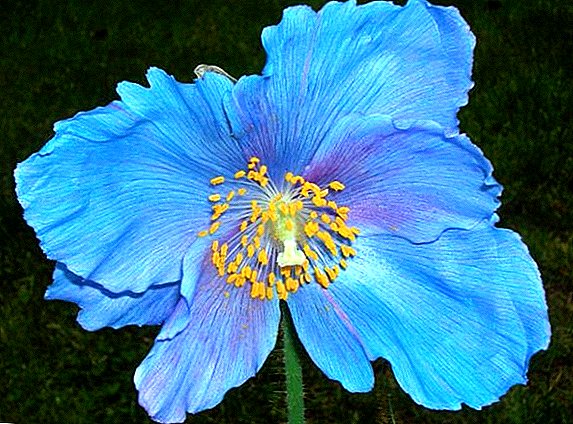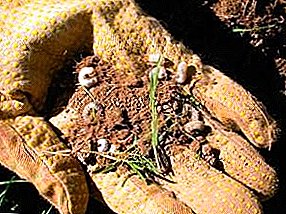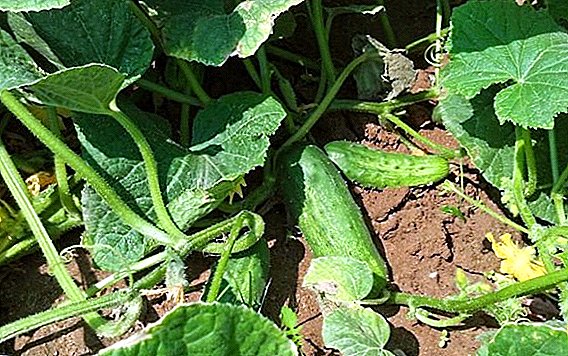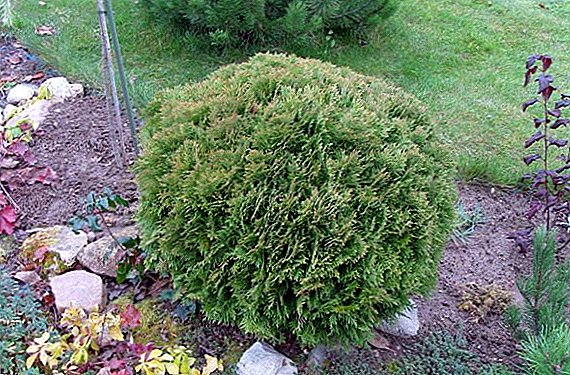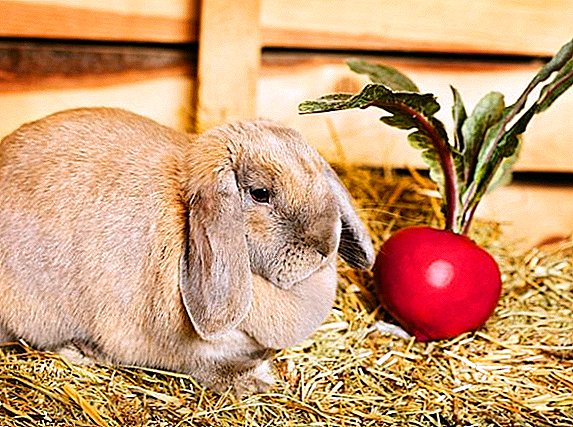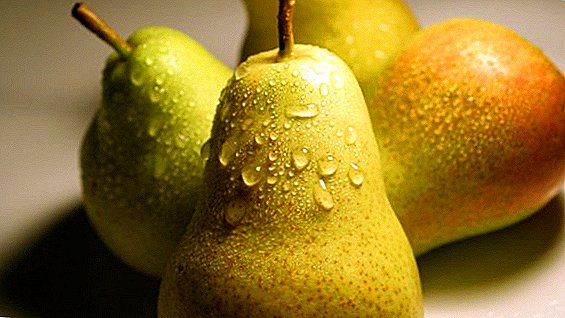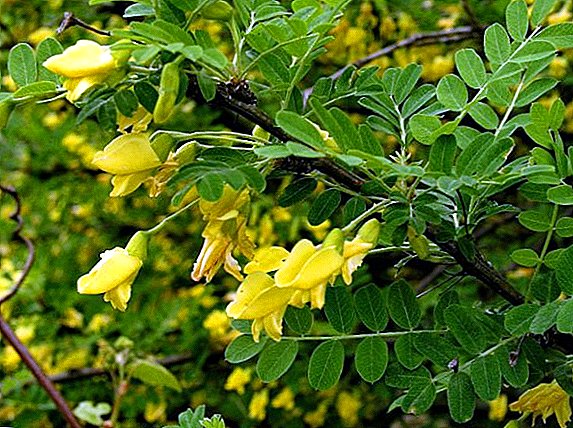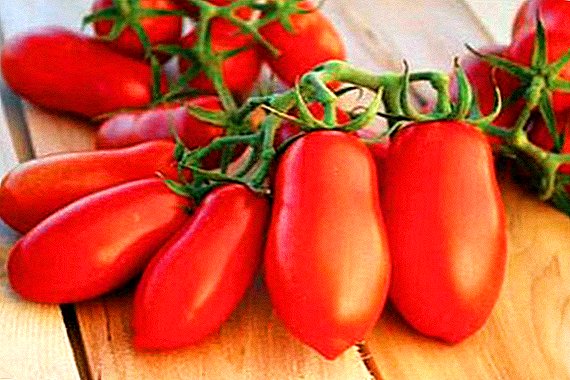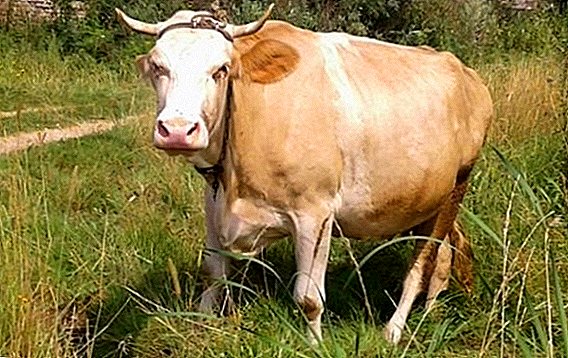 Today it is difficult to imagine life without milk and dairy products, because they have become an integral part of our diet.
Today it is difficult to imagine life without milk and dairy products, because they have become an integral part of our diet.
Even in antiquity, man managed to uncover the mystery of the origin and benefits of milk, for which wild goats, mountain sheep (the ancestors of modern sheep) and tours (the ancestors of cows) were tamed.
In the modern world, through breeding and genetic modifications, it was possible to create more than a thousand breeds of cows, more than a hundred zebu breeds and more than thirty hybrid subspecies. Then we will discuss one of the most popular breeds of domestic cows, the Sychevsky.
History of origin
The Sychevskaya breed of cows was bred by multiple crossing and selection procedures during the time of collectivization at the beginning of the 20th century.
It was then that the efforts of the collective farmers and scientific workers of the Smolensk region were equipped with an all-Union breeding ground for cattle, on the basis of which experiments were carried out with genetic modifications and crossing of various breeds.
Local cows were improved by combining their gene pool with the Simmental gene pool. After the birth of the first specimens of the new breed, they underwent a thorough medical examination and the best were selected for individual cultivation.
Did you know? Specially treated cow dung is a good fuel, and the peculiar smell that appears when it is burned off repels insects quite well.Thanks to this approach, the researchers of the nursery breed bred the Sychevskaya breed of cows, which is distinguished by high rates of milk yield, meatiness, unpretentiousness in keeping and climatic conditions, as well as high immunity to various types of diseases and ailments.

Description and photo
External data of Sychevsky cows fully correspond to the usual understanding of the appearance of meat and dairy cattle.
Appearance and parameters
There is no principal difference between cows and bulls, as well as young ones, the difference is only in size.
Learn more about the best breeds of dairy and meat cows.
Bull
Bulls are larger than cows and much stronger. Their powerful torso completely covers the mighty muscles that allow this animal to move quickly, despite its impressive build, and participate in battles for dominance. The color of such animals is fawn, pale-motley or red.
At the withers, the males reach one and a half meters, and the lengths vary from 155 to 187 cm. The skull is wide and massive, topped with two curved horns. The width of the chest varies between 63 and 85 cm.  The skin is of medium thickness, smooth, covered with hard and elastic coat. The average weight of the bull Sychevskoy breed reaches 900 kg.
The skin is of medium thickness, smooth, covered with hard and elastic coat. The average weight of the bull Sychevskoy breed reaches 900 kg.
Did you know? In the old days it was believed that the sale of a sick cow could lead to its recovery.
Cows
Cows have less pronounced musculature and slightly smaller sizes than bulls. The torso of females is of regular, even shape, with boldly outlined limbs and croup. Color - fawn, pale-motley, red, less often - red-red. Wool - silky, short, slightly softer to the touch than the males.
The height at the withers of cows reaches 125-137 cm. The length of the body is almost equal to bovine and ranges from 140 to 175 cm. The width of the chest rarely exceeds 75 cm. The skin is of medium thickness, has smoothness and light roughness.
The average weight of females of the Sychevsky breed varies from 550 to 600 kg. Udder well developed, rather large in size, smooth and soft to the touch. 
Calves
Calves gain weight at an average rate of 800-1200 grams per day. Weight indices of newborn sychevsk breed - 30-34 kg. By the age of six months they reach a weight of 200 kg. Upon reaching the age of one and a half years, calves weigh an average of about 350-400 kg.
We advise you to read about what vitamins calves need for rapid growth, how to choose a good calf when buying, and also find out what to do if the calf is sluggish and does not eat well.
Meat and dairy characteristics
The main meat and dairy characteristics of the Sychevsk breed of cows can be summarized in the following table:
| Milk yield per year | from 4 to 5 tons |
| Taste of milk | Gentle, creamy, without sharp taste and smell |
| Fat | from 3.5% to 4% |
| Protein | from 3.2% to 3.6% |
| Earliness of weight gain | from 800 to 1200 grams per day |
| Slaughter exit | 58% |
| Meat quality | High Meat tender, with thin fatty layers |
Breeding areas
In 1950, the standard of the Sychev breed was entered in the register and officially recognized in the territory of the Soviet Union. At that time, these cows were bred in the Bryansk, Ryazan, Kaluga regions, as well as in the Republics of Moldova and Belarus.  Today, these cows are bred in the breeding farms of the Smolensk, Kaluga and Tver regions. Work on the modernization and improvement of the species continues to this day.
Today, these cows are bred in the breeding farms of the Smolensk, Kaluga and Tver regions. Work on the modernization and improvement of the species continues to this day.
Advantages and disadvantages
The number of indisputable advantages of the Sychevsk breed can be easily attributed:
- high yields;
- high slaughter meat;
- increased productivity;
- unpretentious care;
- ease of adaptation to different climatic conditions;
- endurance;
- resistance to adverse environmental conditions;
- high immunity to various diseases.
It will be useful for you to read about how to wean a cow to butt, how to properly feed cows on a pasture, and also find out what determines the weight of cattle.
But there is a reverse side of the coin.
The following are some of the disadvantages of this breed:
- young animals require abundant food, because the lack of nutrients in the feed conceived contributes to the appearance and development of rickets;
- pickiness in food;
- in cows that live for the first time, difficult births often occur due to the large size of the head of the calf, which often leads to various injuries of the cub or female.
Care and feeding ration
Despite the general simplicity and low requirements of the breed to the living conditions and care, there are still some rules that are recommended to follow strictly. 
Crib Requirements
- The stall should be spacious enough so that the cow can freely enter it and, if necessary, turn 90 degrees. Approximate dimensions of the stall - not less than 2x2 m.
- The materials that will be used for the construction of the stall must be natural. It is best to take a tree, paint it undesirable.
- Flooring is also recommended to build from boards or wood-based panels. The main requirement for pressed plates will be moisture-resistant impregnation, otherwise under the weight of a large animal and high humidity such flooring will quickly turn into a mash. The optimum thickness of the flooring is about 5 cm.
- It is recommended to use straw or hay for bedding. The thickness of the cushion will depend on the severity of the frost. The colder it is on the street, the more luxuriant you can cover the floor. And vice versa.
- Feeders and drinkers are better placed inside the stall itself so that the cow cannot turn them over or overturn them. Fit wooden trough with polished edges (so that the animal does not hurt). You can also use plastic or metal containers. The main requirement for the drinker will be its capacity, because a cow can easily drink a bucket of water in ten seconds.
- Due to its easy adaptation to various temperature and climatic conditions, this breed is completely unpretentious. It can well endure the 40-degree heat, and quite severe frost. In the hot season, the main thing is to ensure that there is always water in the drinking bowls, and it is undesirable to leave the cow in the open midday sun. It should be left for grazing on a territory with shaded areas - so the cow will be able to control her condition herself and, if necessary, go into the shadows. During the winter, it is impossible for the temperature in the barn to fall below -5 ° C.
Important! Ventilation crib - also an important element of the arrangement. Animals should not be in a stuffy and musty room, and therefore the equipment of the vents will be a very appropriate step.
- Lighting standard: 12 hours - day, 12 hours - night. In the period from late autumn to early spring, it will be necessary to additionally illuminate the barn, in summer there is no need, but if lamps are lit in the barn for convenience, it will not affect the animals. The main thing is not to forget to turn off the light so that pets can calmly go to sleep.

Cleaning and disinfection of premises and equipment
It is recommended to clean the stall twice a day: in the morning and in the evening. Such cleaning will include the sampling of feces and their disposal, the replacement of bedding and bath procedures for the animal. Use a soft brush, a weak soap solution and water to wash the cow after the night so that it is always clean and tidy.
Feeding troughs and drinkers also need to be cleaned so that various harmful bacteria do not start there. After each meal, the feeders should be cleaned of food debris, and drinking bowls should be cleaned once a day. Disinfection is carried out with the help of special preparations that are sprayed in the air for disinfection. This procedure is recommended at least once a week.
Read more about such meat and dairy breeds of cows as Yakut and Krasnogorbatov.
Feed and water
In summer, the basic food of a cow consists mainly of grazing grass, which the animal can consume in unlimited quantities. The cow itself will successfully regulate the amount of food eaten, so that the owner’s participation in this matter is not required.
It is from the grass that animals get all the necessary minerals, vitamins and other nutritional components. As for the males, for them additionally introduced feed to maintain their physical strength and endurance.  In winter, cows eat silage and hay, which was harvested in advance in summer. Here there is a rule that recommends that at least three months pass between the mowing and the beginning of the consumption of a canopy and silage.
In winter, cows eat silage and hay, which was harvested in advance in summer. Here there is a rule that recommends that at least three months pass between the mowing and the beginning of the consumption of a canopy and silage.
Lack of vitamins and minerals in the winter period is compensated by the inclusion in the diet of special complexes (for example, "Trivita"). To the bulls that are specially fed for slaughter, 1-2 kg of feed is included daily in the menu. As for water, the main rule is that it should always be in the drinking trough and regularly replaced with fresh water.
Important! When grazing cows during the first frost from the stall they are removed only after the frost comes off the grass.Sychevskaya breed of cows has become one of the best selections held in the world. Its representatives to this day are actively displayed in many countries and take their places in the stalls, tirelessly replenishing our refrigerators with tasty dairy products.


